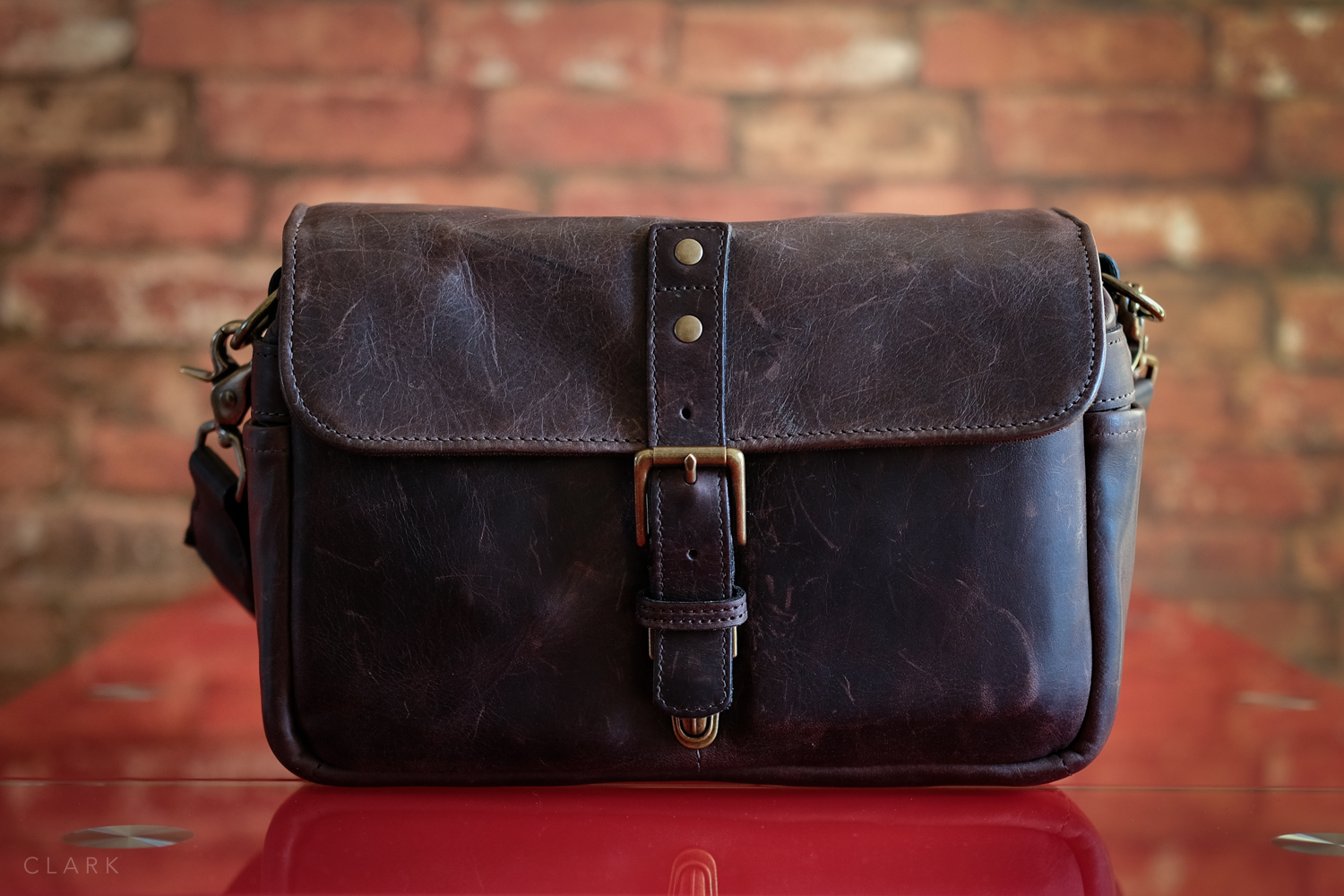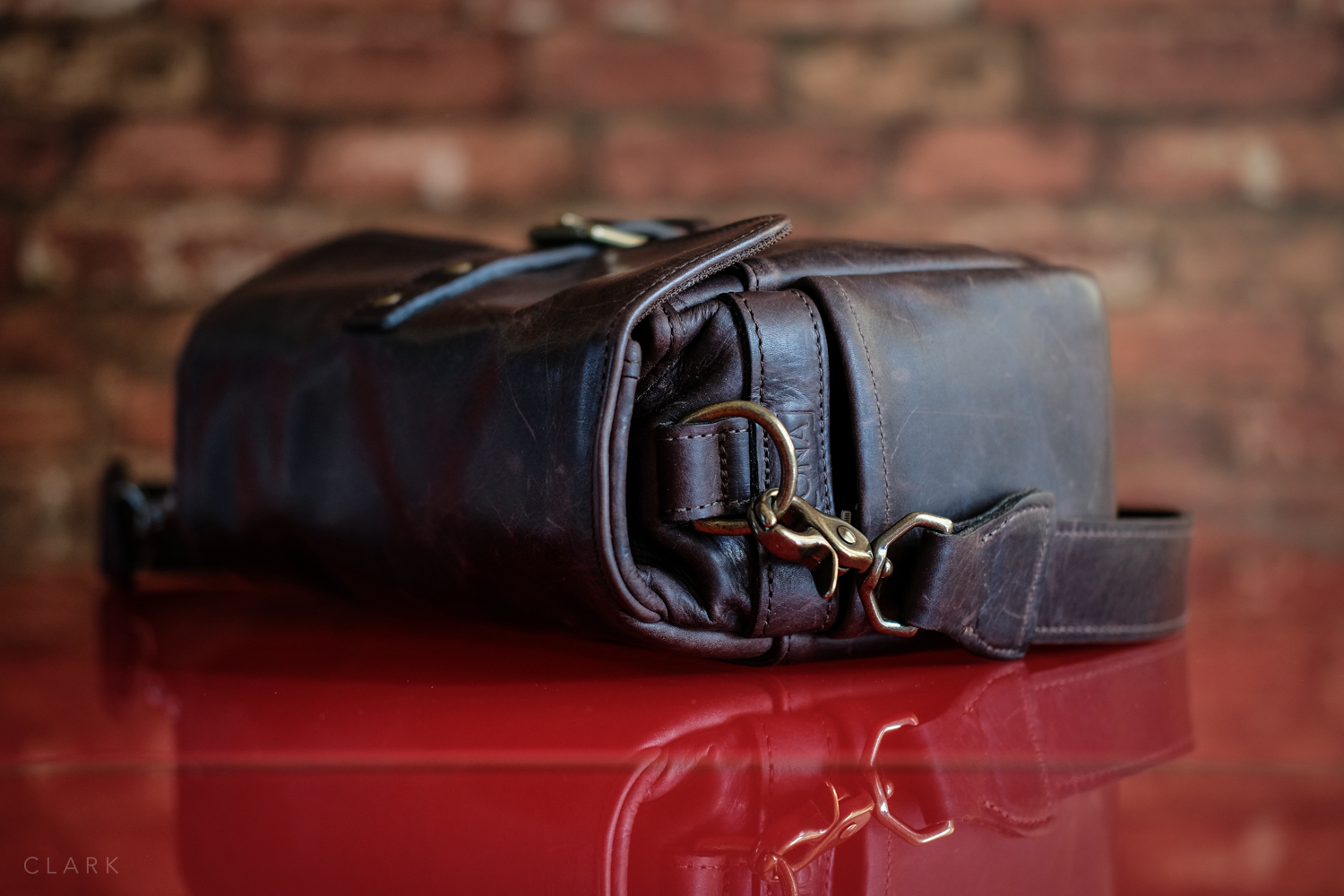I've had an ONA camera bag on my wish list for a while. It was originally the Street Prince in Dark Truffle Leather that I had in mind, but I couldn't get one in the UK at that time. I asked a friend to pick me one up in the US last year, but the dealer was too far from where she was staying. I ended up buying a Tenba Cooper 13 Slim instead, which I'm still using and love, especially for travelling as it has a sleeve to fit over the handle of rolling cases and it has a pocket at the front big enough for my Bose QC25 headphones.
So when a trip to London appeared on the horizon, I found out that The Classic Camera stocked a selection of ONA bags in various styles and finishes. I still liked the Street Prince and even considered the Berlin II, but I've been on the look out for something small that would force me to carry less gear on a day to day basis. I have a backpack for shoots where I need a lot of kit, but for street photography or just a go anywhere bag, I was in need of something smaller, but with enough space to hold a few accessories as well as two or three X-Series cameras with lenses attached.
I kept coming back to the Bowery and was drawn to the leather versions especially. The Antique Cognac looks good (it looks much better in the flesh than it does on the internet actually), but I loved the look of the Dark Truffle leather version. I liked the Tan canvas version when I was looking at them at Classic Camera, but I knew I wouldn't get it out of my system unless I bought the leather one.
I paid the £219 at The Classic Camera and resisted buying a Leica M6 (for now) while I was in the shop. I ended up carrying the Bowery around in it's box for six hours that day while I shot some London Street Photography with the X70 and X-Pro2.
BUILD QUALITY:
The leather ONA bags are made to wear-in really quickly, so if you want one to stay looking as new as the day you bought it for many years, leather ONA bags are not for you. But if you want your bag to look as though you've been using it for years, even though it's fairly new, then look no further because ONA is definitely what you're after.
Build quality on ONA bags is fantastic, in fact I would say it's the best I have seen on any bag! The leather versions especially look as though they would last for many years, possibly out lasting me. The leather is thick and tough and the rivets and buckles are chunky and already look aged, which is in keeping with the rest of the bag.
WHAT FITS INSIDE THE BOWERY:
The Bowery can hold a lot of kit for such a small bag. The leather version is a good bit heavier than the canvas one and as I said earlier, the purpose of this bag for me is to travel lighter on a day to day basis when I don't have a shoot that requires larger lenses. But I can basically get all of the following into the Bowery. I don't always need this amount of gear, but it's good to have the option.
- Fuji X-Pro2 with the 35mm f2 attached
- Fuji X100T (with lens hood)
- Fuji X70 (with lens hood)
- GoPro (under the X70)
- Moleskine (Evernote edition) Notebook
- Parker pen
- Apple Earbuds (headphones)
- A couple of spare batteries
- Short iPhone cable
- 2 spare SD cards (in their cases)
- Business cards and bank/credit cards
- Lens cloth
Here's a short video showing how I fit all this inside the Bowery.
CONCLUSION:
This Bowery is a really cool bag. It feels great over my shoulder and has that rare quality of feeling lighter than it actually is. I was tempted to buy the wax version because it was a good bit lighter and felt and looked great, but I knew I would still have had gear lust over the leather version, so I'm glad I bought this one. The Dark Truffle is the one for me, even though ONA are now doing a black leather versions too.
These bags are not inexpensive by any means, but will last for years, and even though they will get scuffed and worn very quick, they will look as cool as an old Leica that's worn down to the brass. I would highly recommend paying a visit to The Classic Camera store if you happen to be in the London area, I know I'll be back there on my next visit to London. If you're on the fence about buying an ONA bag, just take the plunge. You won't be disappointed.



































































